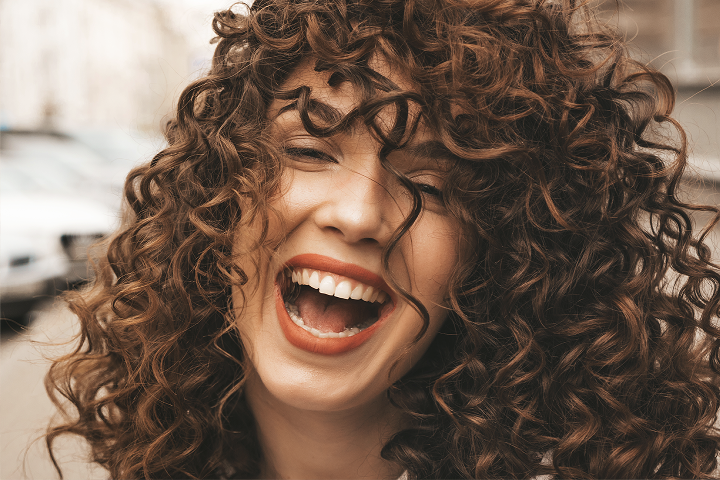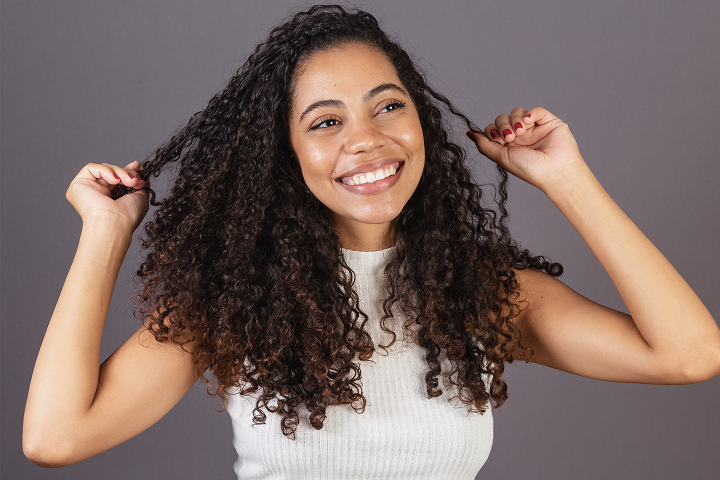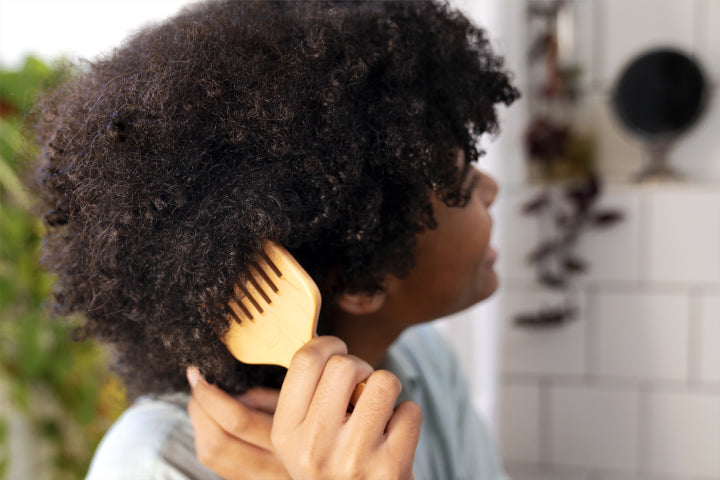Caring for and styling curly hair is an important part of natural hair care. There are many ways to style wavy and curly hair, but scrunching is a proven method to get defined and frizz-free curls, especially for wavy and type 2 curls. You can boost your hair's natural texture and definition by cupping and squeezing it.
However, the scrunching curly hair trend has evolved, and today, it is no longer about using lots of strong hold gel to make your hair stiff. Instead, it is all about creating a natural and textured look. And do not worry- scrunching hair won’t cause any damage if you are gentle with it. Continue reading this blog to learn how to scrunch hair for defined curls!
What is scrunching?
Let us start with what scrunching exactly means. It is a simple way to style and shape your curls by cupping and squeezing them with your hands or a towel. In other words, scrunching is a styling method for wavy and curly hair where you use your hands or a towel to gently cup and squeeze wet curls or waves to help bring out their natural shape.
The best thing about scrunching curly hair is that it is a gentle method that won’t cause any damage. Moreover, it will work with your hair’s natural texture to help form more voluminous, frizz-free and defined curls or waves.
It is a quick way to add definition to your hair without using heat or much product. This way, scrunching eventually saves you time and protects your hair from damage.
What are the benefits of scrunching?
Here are some key benefits of scrunching:
- Reduces damage: Scrunching uses moisturizing products, does not require heat and needs minimal brushing. This helps prevent hair breakage and damage.
- Versatility: From soft waves to bouncy curls, scrunching can help create different looks, depending on how you dry your hair.
- Saves time: Scrunching does not require precision and works well with air drying. It is how the method helps you spend less time styling your hair.
- Increases volume: Gently squeezing and cupping your hair at the roots adds bounce and fullness by enhancing your hair’s natural texture.
How to scrunch hair for curls?
Since scrunching curly hair only takes a few simple steps, it is easy to add to your regular hair routine. The best way to scrunch curly hair is whatever works best for you. You can scrunch and let it air dry or use a blow dryer with a diffuser for faster results. However, there are a few things to keep in mind. We have broken down the process into a few easy steps:
-
Dampen your hair:
Before scrunching, your hair should be damp, either freshly washed or moistened with water from a spray bottle. That is because the best time to scrunch your hair is right after washing your hair.
In this case, consider washing and conditioning your hair with nourishing but lightweight products like Best Life’s Curl Nourish Shampoo & Conditioner. Avoid styling dry curls or waves, as it can lead to frizz and make it harder to shape your hair. Just like you would not brush curly hair when it is dry, you should not style it dry either.
-
Detangle and apply products:
Next, you will need some best products for curly hair to hydrate, define and hold your curls. Consider getting a leave-in hair mask like Best Life’s Deep Nourishing Strength & Repair Hair Mask. Use a wide-tooth comb or detangling brush with the hair mask to detangle your hair. Once detangled, apply your chosen curly hair styling products.
The products you use will depend on your hair type, how often you wash and style and how long you want your style to last. Some great options include Best Life’s Curl Nourish Hydrating Style Gel and Style Hair Cream.
While the styling gel can boost the definition for vibrant and volumizing hair with a lightweight and flexible hold, the styling cream will infuse your hair with a powerful dose of moisture and nutrients.
Related: Hair Gel for Curly Hair: The Secret to Shinier and Healthier Curls
-
Start scrunching:
Now comes the fun part! Gently squeeze the ends of your hair in your palm and work your way up toward the roots. Scrunch hair in sections and repeat this until you have scrunched all of your hair.
Let it air dry, and as it dries, you can scrunch certain sections again to add more definition. Use a microfiber towel or t-shirt to scrunch your hair to reduce frizz and excess moisture. It also helps dry your hair and prepare it for blow drying.
-
Choose your drying method:
You can either air dry your curly scrunched hair or use a low-heat diffuser depending on your hair and the look you want. Air drying is the easiest option if you are not in a rush or want to avoid heat.
While your hair air dries, feel free to scrunch it a bit to keep its shape. However, if you want to dry your hair faster, use a diffuser attachment on low heat when your hair is about 70% dry. It will speed up the drying process and add volume. Just do not forget to apply a heat protectant first.
Once you have got the scrunching technique right, you can try out different scrunching hairstyles and easy and low-maintenance looks to match your new style.
Further Read: Simple Hair Care Routine for Wavy Hair with Best Life’s Haircare Range
Frequently Asked Questions (FAQs)
Q1- Is scrunching good for curly hair?
Ans. If you have type 1 or 2 hair, you should definitely try scrunching! It is easy to do and won‘t damage your hair. Moreover, it is a great way to add volume and definition if you have thin hair.
Related: Curl Type Classification: What Curl Type Am I?
Q2- Who should scrunch their hair?
Ans. Scrunching works best for people with wavy or curly hair. Since this method helps enhance your hair’s natural curl pattern and texture, it is great for those with natural waves or curls who want to boost their texture.
People with straight hair can also try scrunching for extra body or a more relaxed and tousled look. However, it won’t give the same hold as it does for waves or curls. People with tighter curls or type 3 hair might prefer other methods like finger coiling, twisting or a wash-and-go.





